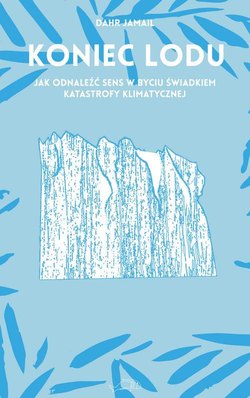Читать книгу Koniec lodu - Dahr Jamail - Страница 8
Przypisy końcowe
Оглавлениеwstęp
[1] Climate Change: How Do We Know?, NASA, climate.nasa.gov/evidence [dostęp: 31.01.2020]. Jeśli nie zaznaczono inaczej, cytaty w przekładzie tłumaczki.
[2] Tamże.
[3] Alexis C. Madrigal, The Houston Flooding Pushed the Earth’s Crust Down 2 Centimeters, „The Atlantic”, 5.09.2017.
[4] Katharine L. Ricke, Ken Caldeira, Maximum Warming Occurs About One Decade After a Carbon Dioxide Emission, „Environmental Research Letters”, t. 9, nr 12 z 2.12.2014.
[5] Henry Fountain, Jugal K. Patel, Nadja Popovich, 2017 Was One of the Hottest Years on Record. And That Was Without El Nino, „New York Times”, 18.01.2018.
[6] Glenn Scherer, How the IPCC Underestimated Climate Change, „Scientific American”, 6.12.2012.
[7] James Hansen i in., Ice Melt, Sea Level Rise and Superstorms: Evidence from Paleoclimate Data, Climate Modeling, and Modern Observations That 2°C Global Warming Could Be Dangerous, „Atmospheric Chemistry and Physics”, nr 16 z 22.03.2016.
[8] Garry K.C. Clarke i in., Projected Deglaciation of Western Canada in the Twenty-First Century, „Nature Geoscience”, nr 8 z 6.04.2015.
[9] J.M. Shea i in., Modelling Glacier Change in the Everest Region, Nepal Himalaya, „The Cryosphere”, nr 9 z 27.05.2015.
denali
[1] Aldo Leopold, Round River, Oxford University Press, New York 1993, s. 165.
[2] Stephen Kurczy, Global Temperature to Rise 3.5 Degrees C. by 2035: International Energy Agency, „Christian Science Monitor”, 11.11.2010.
[3] Climate Change Report Warns of Dramatically Warmer World This Century, World Bank, 18.11.2012.
[4] Steve Connor, Global Warming: Scientists Say Temperatures Could Rise by 6C by 2100 and Call for Action Ahead of UN Meeting in Paris, „The Independent”, 15.04.2015.
